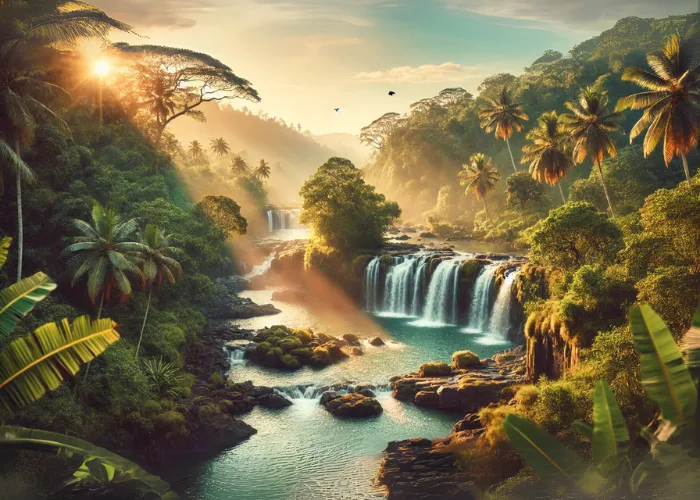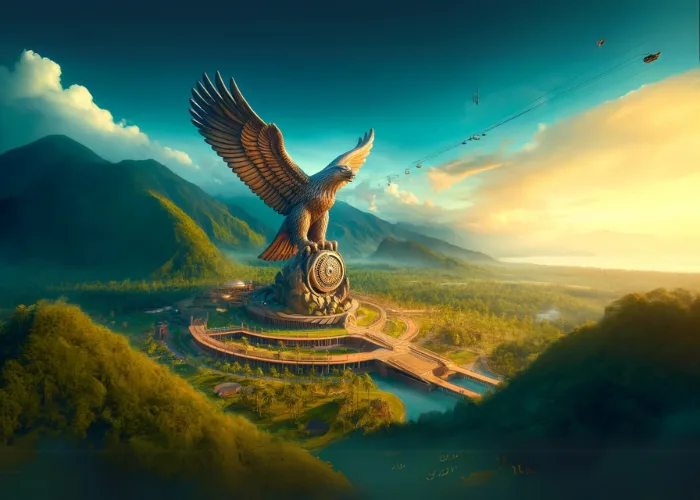Gass Forest Museum
If you are a nature lover and a history buff, the Gass Forest Museum is a must-visit destination for you. Located in the heart of Gass Forest Reserve in Nigeria, this museum boasts a diverse collection of artifacts and exhibits that celebrate the natural and cultural heritage of the region. In this article, we will explore the history and significance of the Gass Forest Reserve and the Gass Forest Museum, and provide you with all the information you need to plan your visit.
History of Gass Forest Reserve
The Gass Forest Reserve is a vast expanse of forest land located in the north-central part of Nigeria. It was established in 1932 by the British colonial administration to protect the natural resources and wildlife of the region. The reserve covers an area of over 6,000 hectares and is home to a diverse range of flora and fauna, including rare species of monkeys, birds, and reptiles.
Introduction to Gass Forest Museum
The Gass Forest Museum was established in 1987 as a joint initiative between the Nigerian government and the United Nations Development Programme (UNDP) to promote the conservation of natural and cultural resources in the region. The museum is located at the entrance of the Gass Forest Reserve and serves as a gateway to the reserve.
Exhibits at Gass Forest Museum
The Gass Forest Museum boasts a diverse collection of exhibits that showcase the natural and cultural heritage of the region. The exhibits are organized into three main sections: natural history, cultural history, and contemporary issues.
Natural History Section
The natural history section of the museum features exhibits on the geology, flora, and fauna of the Gass Forest Reserve. Visitors can learn about the different types of rocks and minerals found in the region, as well as the various species of plants and animals that call the forest home. The highlight of this section is the collection of taxidermy specimens of rare and endangered species, such as the African elephant and the western lowland gorilla.
Cultural History Section
The cultural history section of the museum showcases the rich cultural heritage of the people who live in and around the Gass Forest Reserve. Visitors can learn about the traditional beliefs, customs, and practices of the various ethnic groups in the region, as well as the history of the slave trade and its impact on the local communities. The highlight of this section is the collection of artifacts and artworks from the Benue River Valley civilization, one of the oldest and most advanced civilizations in West Africa.
Contemporary Issues Section
The contemporary issues section of the museum focuses on the current environmental and social challenges facing the Gass Forest Reserve and its surrounding communities. Visitors can learn about the efforts being made to conserve the forest and its wildlife, as well as the sustainable development initiatives that are helping to improve the livelihoods of the local people.
Activities at Gass Forest Museum
Apart from the exhibits, the Gass Forest Museum also offers a range of activities and experiences for visitors to enjoy. These include:
Guided Nature Walks
Visitors can take a guided nature walk through the Gass Forest Reserve with an experienced guide who will help them spot and identify the various species of flora and fauna that call the forest home.
Birdwatching
The Gass Forest Reserve is a haven for birdwatchers, with over 200 species of birds recorded in the area. Visitors can take a guided birdwatching tour or simply explore the forest on their own.
Cultural Performances
The museum hosts occasional cultural performances by local musicians, dancers, and storytellers, giving visitors a glimpse into the vibrant cultural traditions of the region.
Plan Your Visit to Gass Forest Museum
The Gass Forest Museum is open daily from 9:00 am to 5:00 pm. Admission fees are affordable, with discounts for children and students. Visitors are advised to wear comfortable clothing and shoes suitable for walking on uneven terrain. It is also recommended to bring insect repellent and sunscreen, as well as a camera to capture the beautiful scenery and wildlife.
The museum has a cafeteria that serves refreshments and light meals, as well as a souvenir shop where visitors can purchase unique and locally made crafts and gifts.
Conclusion
The Gass Forest Museum is a unique destination that combines natural beauty and cultural heritage in a way that is sure to captivate visitors of all ages and interests. With its diverse collection of exhibits and activities, it offers a fascinating insight into the history and ecology of the Gass Forest Reserve and the surrounding region. Whether you are a nature lover, a history buff, or simply looking for a peaceful and scenic getaway, the Gass Forest Museum is definitely worth a visit.
FAQs
1. Is the Gass Forest Reserve open to the public?
Yes, the reserve is open to the public, but visitors are advised to follow the rules and regulations set by the management to ensure the conservation and protection of the forest and its wildlife.
2. Are there any accommodations near the Gass Forest Museum?
Yes, there are several lodges, guesthouses, and hotels in the nearby towns and villages that offer comfortable and affordable accommodation options for visitors.
3. Can I bring my pets to the Gass Forest Reserve?
No, pets are not allowed in the reserve to avoid any disturbance to the wildlife.
4. Is there a fee for guided tours and activities at the museum?
Yes, there is a fee for guided tours and activities, but the prices are affordable and vary depending on the type and duration of the tour or activity.
5. Can I volunteer at the Gass Forest Museum?
Yes, the museum occasionally accepts volunteers who are interested in helping with conservation and community development initiatives. Interested individuals can contact the museum for more information on how to apply.




